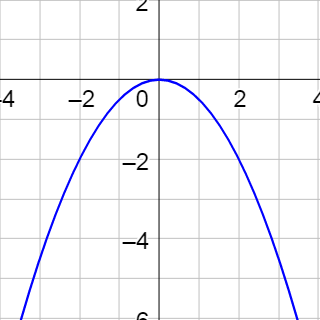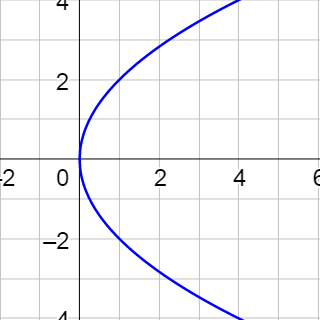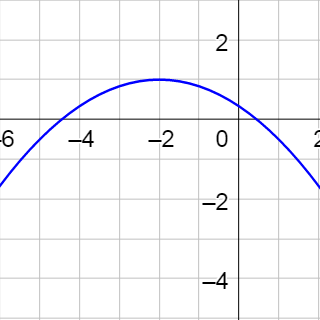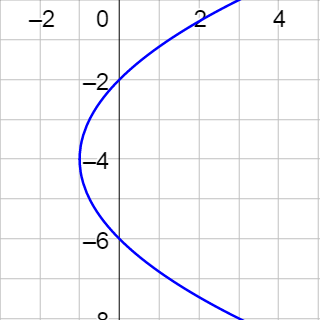Precalculus by Richard Wright
Precalculus by Richard Wright
But seek first his kingdom and his righteousness, and all these things will be given to you as well. Matthew 6:33 NIV
Summary: In this section, you will:
SDA NAD Content Standards (2018): PC.6.7

The L'Umbracle sculpture garden is covered with arches shaped like parabolas that open down. Of all arch types, parabolic arches have the most thrust at their bases and can span the greatest distances when the weight is spread uniformly over the arch. Parabolas and similar curves are often used to make pleasing arches and shapes in buildings and bridges.
Parabolas are the set of all points in a plane that are equidistant from a fixed line, called the directrix and a fixed point, called the focus. The vertex is the maximum or minimum point and is the midpoint between the focus and directrix. The axis of symmetry is the line perpendicular to the directrix and goes through the focus and vertex. The parabola will bend around the focus and away from the directrix.
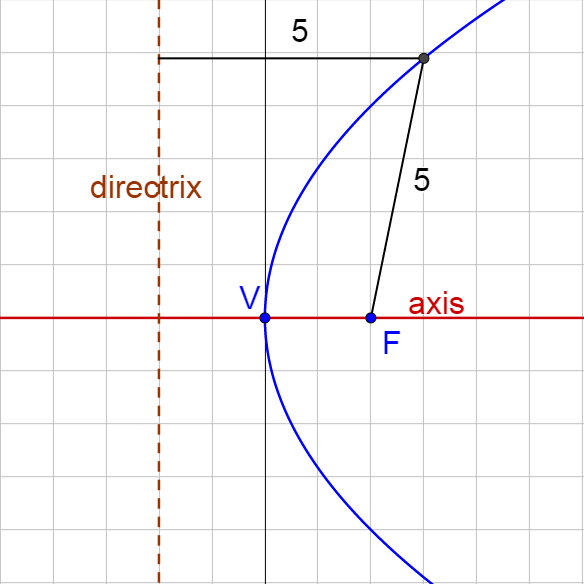
Parabolas can be vertical so that they open up or down, or they can be horizontal opening left or right. The table gives information about the parts of a parabola.
Vertical Parabola |
Horizontal Parabola |
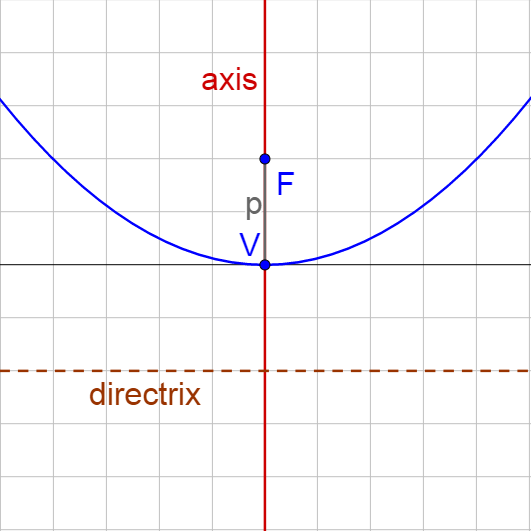 |
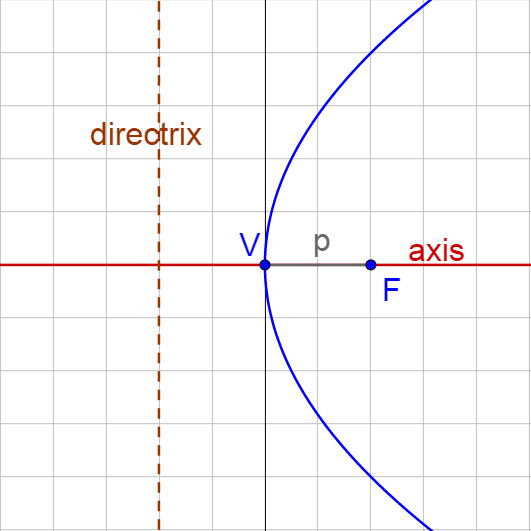 |
| p = the directed (+, −) distance from the vertex to the focus. Vertex: (h, k) Focus: (h, p + k) Directrix: y = k – p Standard Equation: (x − h)2 = 4p(y − k) |
p = the directed (+, −) distance from the vertex to the focus. Vertex: (h, k) Focus: (p + h, k) Directrix: x = h – p Standard Equation: (y − k)2 = 4p(x − h) |
Graph a parabola by solving the equation for y, and making a table of values.
Find the vertex, focus, and directrix of the parabola given by \(y = \frac{1}{6}x^2\).
Solution
Rearrange the equation to fit the standard form.
x2 = 2y
Since it is x2, it is a vertical parabola. Compare it to the standard form equation.
(x − h)2 = 4p(y − k)
Notice that h = 0, k = 0, and 4p = 6 so \(p = \frac{3}{2}\).
The vertex is (h, k) = (0, 0).
The focus is (h, p + k) = \(\left(0, \frac{3}{2} + 0\right) = \left(0, \frac{3}{2}\right)\).
The directrix is y = k − p, so \(y = 0 - \frac{3}{2} \rightarrow y = -\frac{3}{2}\).
Find the vertex, focus, and directrix of the parabola given by x = 4y2.
Answer
Vertex: (0, 0); Focus: \(\left(\frac{1}{16}, 0\right)\); Directrix: \(x = -\frac{1}{16}\)
Find the standard form of the equation of a parabola with vertex at (0, 0) and focus (−3, 0). Then graph the parabola.
Solution
Graph the vertex and focus, and notice that the line through the two points is horizontal. This line is the axis.
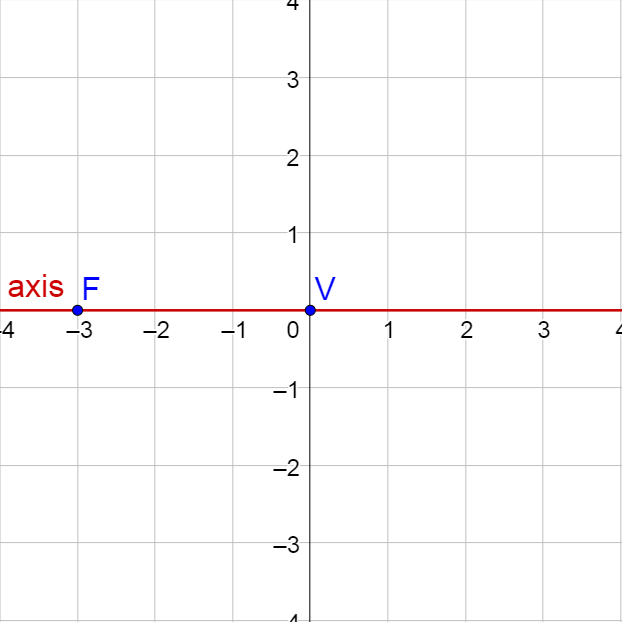
Since the vertex = (0, 0) = (h, k), both h = k = 0.
The distance from the vertex to the focus is 2 to the left, so p = −2.
Now fill out the standard form equation for a horizontal parabola.
(y − k)2 = 4p(x − h)
(y − 0)2 = 4(−3)(x − 0)
y2 = −12x
Graph the parabola by solving the equation for y.
$$y = ±\sqrt{-12x}$$
Now make a table of values. x-values greater than 0 produce imaginary results.
| x | −4 | −3 | −2 | −1 | 0 |
|---|---|---|---|---|---|
| y | ±6.92 | ±6 | ±4.90 | ±3.46 | 0 |
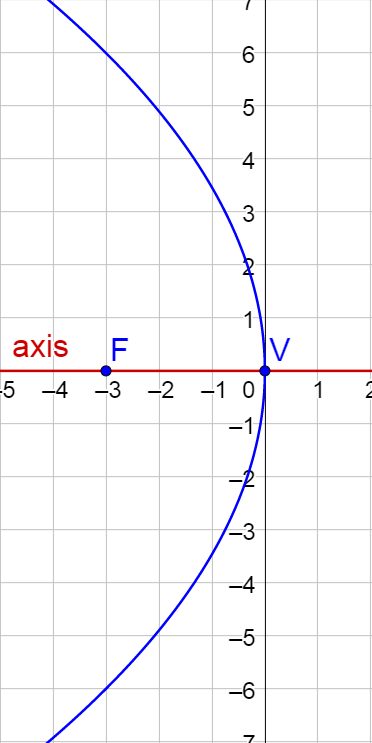
Find the standard form of the equation of a parabola with vertex at (0, 0) and focus (0, 4). Then graph the parabola.
Answer
x2 = 16y; 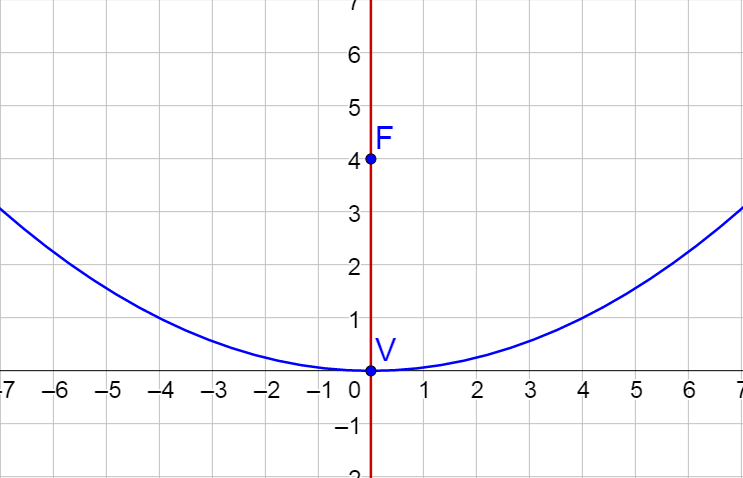
Find the vertex, focus, and directrix of the parabola given by x2 + 2x + 8y – 31 = 0. Then graph the parabola.
Solution
It is x2, so this is a vertical parabola.
Start arranging the terms to fit the standard form.
x2 + 2x = −8y + 31
Complete the square in the x by adding \(\left(\frac{1}{2} b\right)^2\) to each side of the equation.
$$x^2 + 2x + \left(\frac{1}{2}\left(2\right)\right)^2 = -8y + 31 + \left(\frac{1}{2}\left(2\right)\right)^2$$
x2 + 2x + 1 = −8y + 32
Factor both sides.
(x + 1)2 = −8(y − 4)
Now compare to the standard form equation.
(x − h)2 = 4p(y − k)
Notice that h = −1, k = 4, and 4p = −8 so p = −2.
The vertex is (−1, 4).
The focus is (−1, 2).
The directrix is y = 6.
Graph by solving for y and making a table of values.
(x + 1)2 = −8(y − 4)
$$\frac{\left(x + 1\right)^2}{-8} = y - 4$$
$$y = \frac{\left(x + 1\right)^2}{-8} + 4$$
| x | −4 | −3 | −2 | −1 | 0 | 1 | 2 | 3 | 4 |
|---|---|---|---|---|---|---|---|---|---|
| y | 2.88 | 3.5 | 3.88 | 4 | 3.88 | 3.5 | 2.88 | 2 | 0.88 |
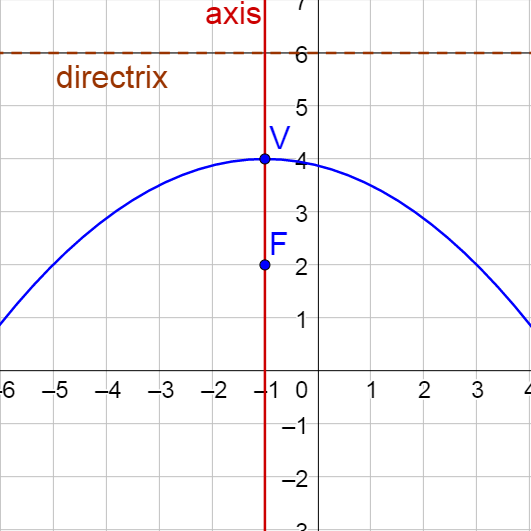
Find the vertex, focus, and directrix of the parabola given by y2 − 4x − 4y − 8 = 0. Then graph the parabola.
Answer
Vertex: (−3, 2); Focus: (−2, 2); Directrix: x = −4; 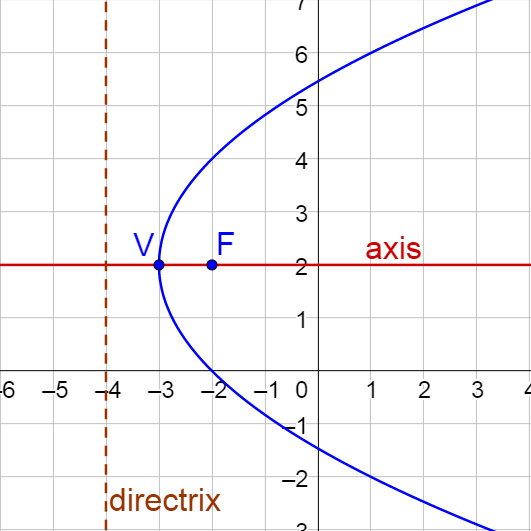
Write the standard form of the equation of the parabola with focus at (4, 1) and directrix x = −2.
Solution
The directrix is vertical, so the axis of the parabola is horizontal.
The focus is (4, 1) = (p + h, k), so k = 1.
Graph the directrix and the focus. The vertex is halfway in between the focus and directrix, (1, 1).
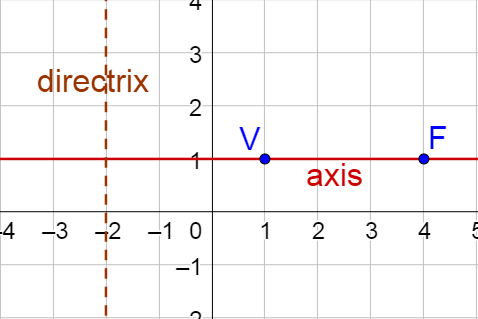
The distance from the vertex to the focus is 3 to the left, so p = −3.
Fill in the standard form equation for a horizontal parabola.
(y − k)2 = 4p(x − h)
(y − 1)2 = 4(−3)(x − 1)
(y − 1)2 = −12(x − 1)
Write the standard form of the equation of the parabola with focus at (0, −1) and directrix y = 3.
Answer
x2 = −8(y − 1)
Vertical Parabola |
Horizontal Parabola |
 |
 |
| p = the directed (+, −) distance from the vertex to the focus. Vertex: (h, k) Focus: (h, p + k) Directrix: y = k – p Standard Equation: (x − h)2 = 4p(y − k) |
p = the directed (+, −) distance from the vertex to the focus. Vertex: (h, k) Focus: (p + h, k) Directrix: x = h – p Standard Equation: (y − k)2 = 4p(x − h) |
Helpful videos about this lesson.

